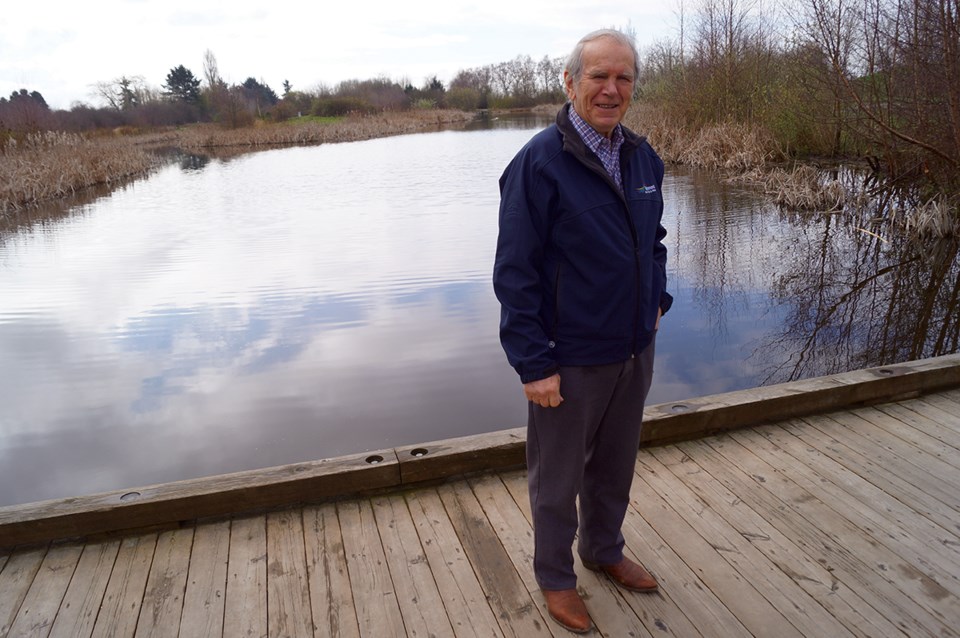An ambitious plan to bring spawning salmon to the Terra Nova slough is being tabled by Coun. Harold Steves, who says doing so would fulfill a long-held promise from the city.
“Let’s get the salmon back to the slough, just as we initially planned,” said Steves, who has asked park planners to explore what it will take to bring chum salmon to the area.
Vancouver and Burnaby have spent millions on various successful projects to uncover once buried salmon creeks (in 2012, at Vancouver's Still Creek, salmon returned after an 80 year absence).
Steves told the News he doesn’t know the exact cost of such a plan at Terra Nova, but it would likely be under $1 million and noted details would become more clear once staff have time to investigate.
Steves said there are educational and historical benefits to the project, noting his father told him stories of chum salmon spawning in Richmond sloughs, such as this one, where First Nations people once made their home at the turn of the twentieth century. He said children visiting the playground would be able to witness the spawning.
There appear to be pros and cons to constructing a fish habitat project at Terra Nova.
For instance, while the slough has already been uncovered and gravel, essential for chum spawning, has been laid, the city would have to build a sea gate (a small opening below the dyke) at the north end of the park to stop water from flowing in during moments of high sea levels. Furthermore the city would have to create a gradient in the slough for flowing water, also essential for fish eggs.
The problems are not lost on local, retired fish biologist Otto Langer.
“If the eggs do not get a free flow of water around them they cannot get the oxygen they need and will suffocate. Also, the water flow is needed to remove metabolic wastes such as ammonia and carbon dioxide,” he said.
Langer said if that were to happen, pumps might still be required to constantly flush out the outgoing channel into Sturgeon Bank.
Better water flow means cleaner gravel and less muddy water, thus allowing for better potential spawning. With muddier water, Langer said the slough could still become a good place for salmon fry habitat.
Steves said better flow would also mitigate the need down the road to clean out the slough of duck excrement; something the city is presently spending $1 million on at Minoru ponds.
Langer questioned whether it was good use of taxpayers’ money in light of the fact the provincial government has allowed for mass expropriation of gravel (salmon spawning habitat) from the Fraser River upstream.
“Why are we destroying what nature has built for us then we try and recreate it at great expense where it probably will not work?” he asked.
Steves agreed but noted the river’s upkeep is beyond Richmond’s jurisdiction.
“We built a million-dollar playground that doesn’t belong there, so we ought to be able to spend some money to get on with this overdue project,” said Steves, who added he now regrets voting for the play area, as it was constructed.
“We were told it would be kids climbing trees and playing on logs like Richmond used to be. Then we ended up with that,” he said.
Steves’ proposition will be tabled at city council on April 7.



